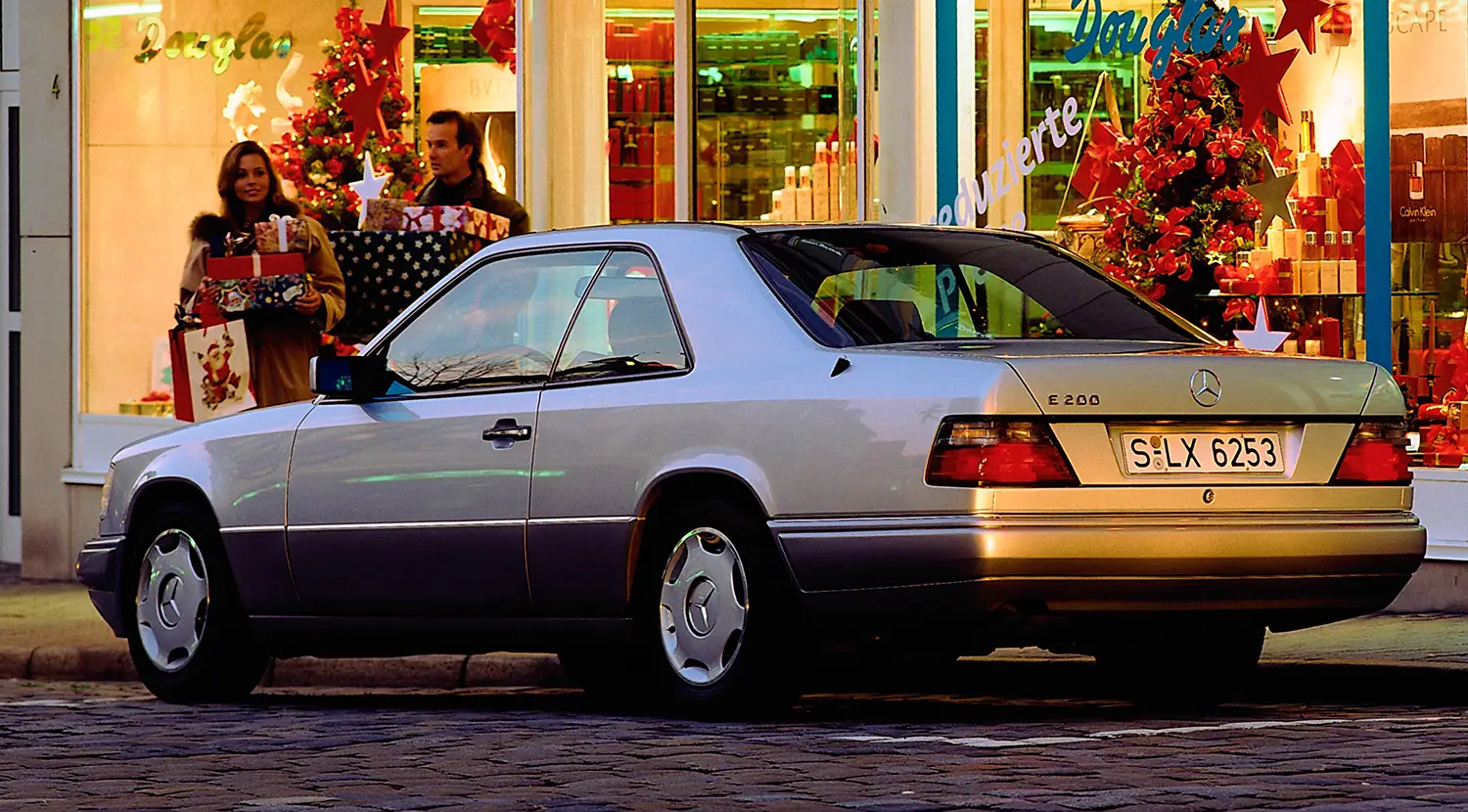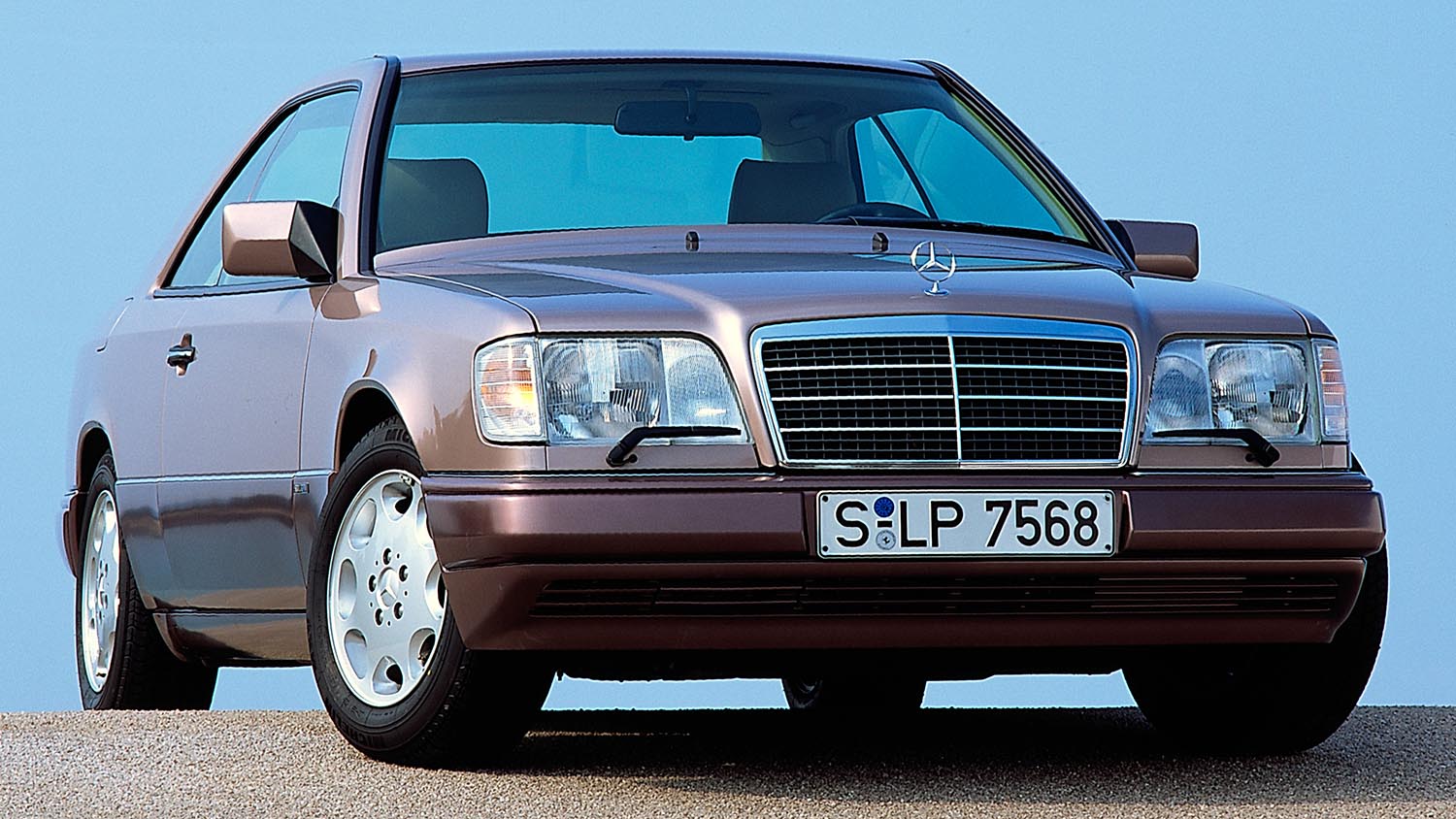
The W124 model line from Mercedes-Benz represents a high watermark for engineering integrity. In 1993, this robust platform underwent a key transition, creating the instantly recognizable 1993 Mercedes-Benz E 200 Coupé W124. This car was part of the crucial mid-life facelift for the C124 two-door series. It was also the moment when Mercedes officially rebranded its mid-sized range as the E-Class. This change established a naming convention that continues to this very day.
The Evolution of the Two-Door W124
The W124 Coupé, chassis designation C124, originally launched in 1987. It followed the successful two-door tradition established by its predecessor. Significantly, the Coupé was not merely a chopped version of the sedan model. Rather, it boasted a specific structural design. Engineers intentionally shortened the wheelbase by 85 millimeters, providing a sleeker profile. Furthermore, the overall height was also reduced, lending the car an elegant and purposeful stance.
Pillarless Design: An Enduring Signature
A hallmark of this classic Mercedes Coupé is the utterly unique pillarless side glass. This design choice removes the central B-pillar entirely. When all four windows are lowered, the car achieves a completely open side aperture. This striking visual feature enhances the vehicle’s aesthetic appeal immediately. It provides an unmatched sense of freedom and airiness for all occupants. This kind of thoughtful engineering remains a major appeal point.
Facelift Details and E-Class Rebranding
The 1993 model year marked a significant visual and naming update for the Coupé. Mercedes-Benz standardized its nomenclature across its entire lineup. The E-Class designation officially replaced the old ‘CE’ suffix. Consequently, the former 200 CE became the E 200 Coupé. This change formalized its position within the brand’s growing portfolio.
Visual Updates borrowed from the S-Class
The facelift introduced several key styling cues from the flagship S-Class (W140). The most prominent change was the redesigned radiator grille, often called the “integrated radiator.” This new grill was harmoniously integrated into the bonnet itself. Moreover, the famous three-pointed star now sat atop the bonnet. Transparent front indicator lenses and bichromatic rear lights finished the modern update effectively.

The bumper rub strips were also updated to match the main body color. The rear bumper moldings now extended to the wheel cutouts, a small but significant touch. These subtle yet impactful modifications provided a contemporary look for the classic C124 body style. It successfully bridged the gap between the boxy 80s design and the emerging aesthetic of the mid-90s.
The M111 Engine and Coupé Performance
The 1993 Mercedes-Benz E 200 Coupé W124 was often initially destined for specific European markets. This positioning was largely driven by regional vehicle tax structures. It offered the Coupé experience in a more accessible and fiscally responsible package. Beneath the bonnet lay the reliable M111 four-cylinder engine. This power unit marked a transition to modern multi-valve technology.
The E 200 Coupé’s 2.0-liter, 16-valve engine delivers $100 \text{ kW}$ or $136 \text{ horsepower}$ at 5500 RPM. Torque peaks at $190 \text{ Newton-meters}$ at 4000 RPM. This configuration enables the rear-wheel-drive Coupé to reach a top speed of $200 \text{ km/h}$. Acceleration from zero to $100 \text{ km/h}$ takes a measured $11.5 \text{ seconds}$. While not built for outright speed, this engine delivers smooth, dependable power.
Building on W124’s Engineering Prowess
Ultimately, the performance figures tell only part of the story for the E 200 Coupé. The W124 chassis is renowned for its exceptional build quality and robust over-engineering. The vehicle features an independent front suspension with MacPherson struts. At the back, the iconic Mercedes multi-link independent rear suspension provides superior road-holding. This advanced suspension system was highly influential at the time.
The attention to detail ensures remarkable ride comfort and stability. Furthermore, features like power steering and four-wheel disc brakes were standard. Engineers prioritized occupant safety and structural rigidity throughout the Coupé’s construction. This dedication to lasting quality cemented the car’s reputation internationally.
Summary of a Lasting Auto Icon
The 1993 Mercedes-Benz E 200 Coupé W124 stands as a pivotal model in the E-Class lineage. It blends the structural brilliance of the W124 with the visual refreshment of the mid-90s facelift. It represents the pinnacle of classic Mercedes-Benz design principles, especially the elegant pillarless Coupé form. The car successfully combined lasting quality with sophisticated styling. This two-door remains an immensely desirable and highly respected classic vehicle. Its impact on subsequent Mercedes-Benz Coupé design is undeniable.
Disclaimer: Content on this site is for informational purposes only. Vehicle specs, pricing, and availability may change. Always verify details with official sources before making decisions. Opinions are those of the authors.
Source: Mercedes-Benz

